“In hula, the dancers became one with everything in nature. They bent, swayed, and gestured, moving in countless ways to tell stories, most of which had deep meanings. Behind these graceful, expressive, sometimes dignified and sometimes earthy dances lay years of study, meditation and prayer.” —Nona Beamer
Much like the hula dancer swaying her hips as she moves, the fishes on the canvas of Ronald Cortez’s paintings appear to swim and glide. Even if the tomatoes appear ripe, you want to pick them and slice them, but remember it is a canvas. But it looked so real, the salted egg has that characteristic yolk and white and a hint of oil in the yolk. The peso is realistically portrayed. “It is about remembering the Php 10 and Php 20, no longer in circulation, for this, I am remembering something from the past – ano ang pinagmulan mo (what are your roots?)”
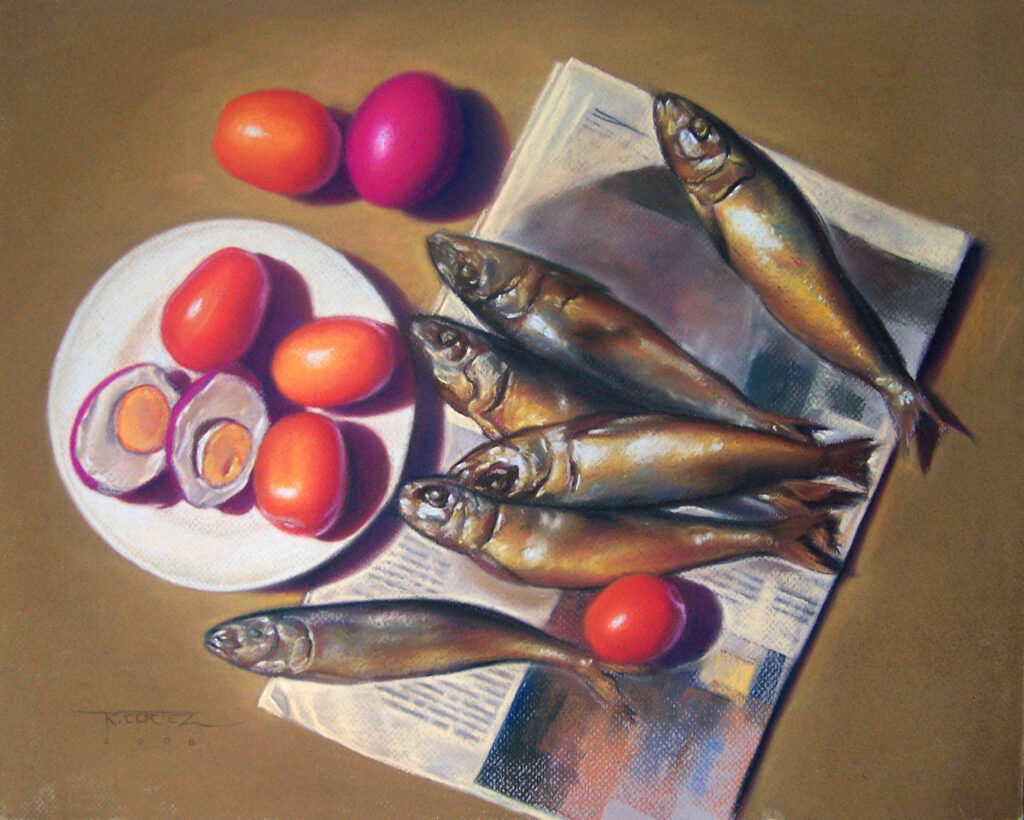
To Ysabel Grace Simon, a 17yo high school student at La Guardia Arts, shared her feelings about being back in the Philippines: “We took trips to Baguio, and I remember the orange sky and with fishes. The faded look at the edges of the painting and the use of natural light. I was just 7yo when I left the Philippines.”
It seemed so real that it reminded me of the masterful works of Fernando Amorsolo, Ben Cabrera, and Thomas Kinkade.
I once had the privilege to talk with Ben Cabrera at two sites: one at Andrewshire Gallery on Wilshire Blvd. in Los Angeles and another at his BenCab Museum in Baguio, Philippines. I first heard of Ben Cabrera, the National Artist of the Philippines, who has been painting for five decades now, from a bookseller who described how in the morning, she woke up with views of the sea and the mountains from her guest bedroom. A walk outside led her to an organic garden and a fish pond, the museum with various exhibits of contemporary artists, and a café and a museum shop.
I posed questions to BenCab, but his one vivid answer was distilled into its essence: “Learn how to draw and draw well before you paint, “ he said.
I looked at paintings with a discerning eye now for drawings, distinguishing the amateurs from the masters.
I met Ronald Cortez while visiting the Philippine Consulate in Fifth Avenue, New York. Courtesy of a friend’s iPhone, I viewed Ronald Cortez’s paintings. I had an immediate gut reaction: “Oh my, your paintings belong in the category of Fernando Amorsolo and National Artist Ben Cabrera.”
It was an exclamation, for sure, but the truth was confirmed by a photographer with an eye for details, who said, “Look at that painting, do you see how the fish is swimming? Yes, he is in the league of Amorsolo.”
Fernando Amorsolo was a celebrated painter of portraits and rural landscapes, well known for his mastery of light, much like America’s Thomas Kinkade, the Painter of Light.


Self-taught painter
Raised by a single mother, Nanie Ratio Cortez, a dressmaker, now 70yo, Ronald lost his father to an aneurysm when he was two months old.
“Walang laruan, pag may pencil ako, masaya na ako.” (No toys, but with a pencil, I was happy).
He learned not to ask for toys, as monies were just enough for rent, food, and school fees.
His first canvas was the bag used to wrap dresses for his mother’s customers. He drew on those bags. “Natutuwa ang mga customers ng nanay ko. Malikot ako, bibigyan ako ng lapis, mabait na ako.” (My mother’s customers were pleased. Restless, I would be given a pencil. I would behave).
He grew up in Lucban, Quezon. “Baon ko ang bundok. Nasa imahinasyon ko.” (I stored mountains in my imagination).
He went to school in Taytay, Rizal, near his mother’s dress shop. By fourth grade, his care was entrusted to his aunt while his mother worked in Saudi Arabia.
From 4th to 6th grade, he drew portraits, fascinated by facial features. First, he drew the eyes, then the nose and mouth. “Unlike what they teach us in school,” Ysabel Grace Simon, a 17yo student of La Guardia Arts, noted.
Ronald lingered in malls, where he watched others do charcoal drawings. He then saved his allowance and bought his supplies. Friends spurred on his art by asking him to paint their crushes and got more charcoal as in-kind payment.

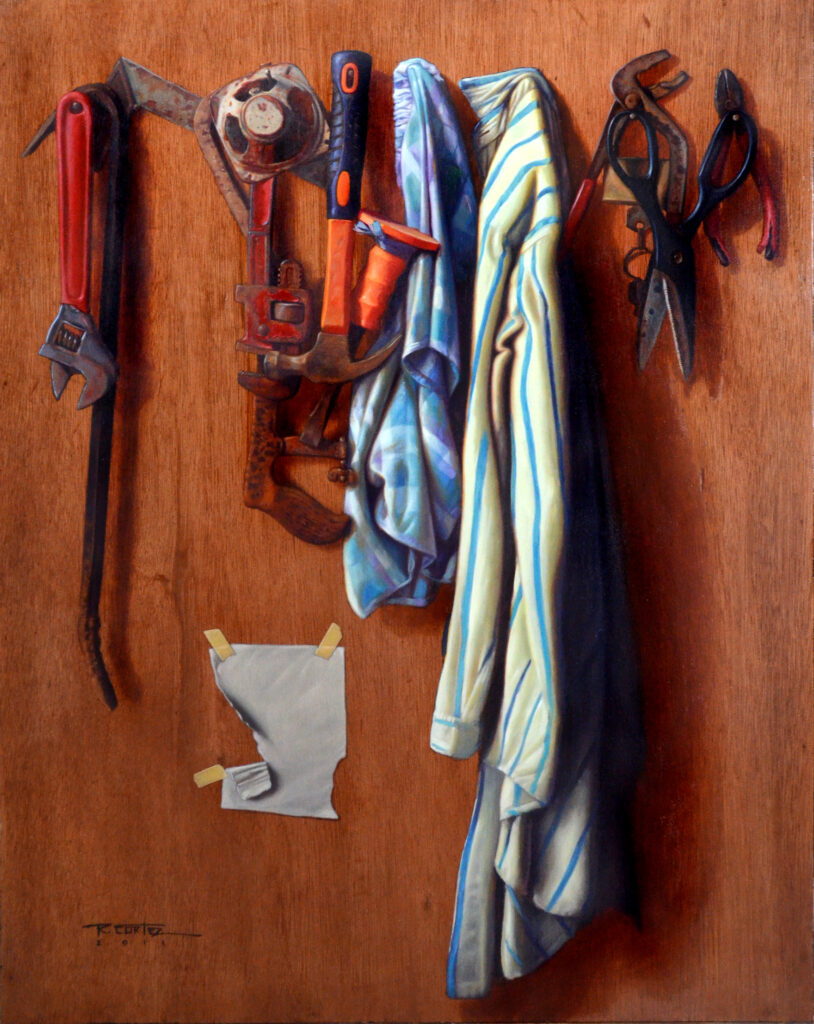
In high school, a cousin asked him to paint a portrait of his girlfriend, and in return, he got a set of oil paints. It was at this point that he decided he wanted to be a painter.
He went to Southern Luzon Polytechnic College for arts and sciences but had no major. But, his mother encouraged him to be a seaman, following the example of a cousin, Marcelo Raneses, a boat captain. So, he took seaman classes.
Craving Art and the Parable of Talents
While studying in Manila, he craved art and satisfied his hunger by browsing books at the National Bookstore in Avenida Rizal. Here, he met Loreto Racuyan, another artist, who introduced him to the owner of an art supply store. He also told him that he has potential and that he needed to focus on his art. He shared his insights on the Parables of Talents, “Ipagpapalit mo ba ang 4 na taon sa pag-aaral, habang buhay kang hindi masaya?” (Will you exchange four years of going to school and a lifetime of unhappiness?)”
The Parable of Talents taught him first that his artistic talents must be used to glorify God and to be shared with mankind. Second, he would be given what he needs to further his talents and realized that his friends supplied his art materials to improve them. Third, we are endowed with different talents, some with one talent, others with five. He was concerned that he might lose his ability to paint if he did not focus on painting. Fourth, we work for the Master who gave us the talent. Fifth, we will be held accountable for our work.
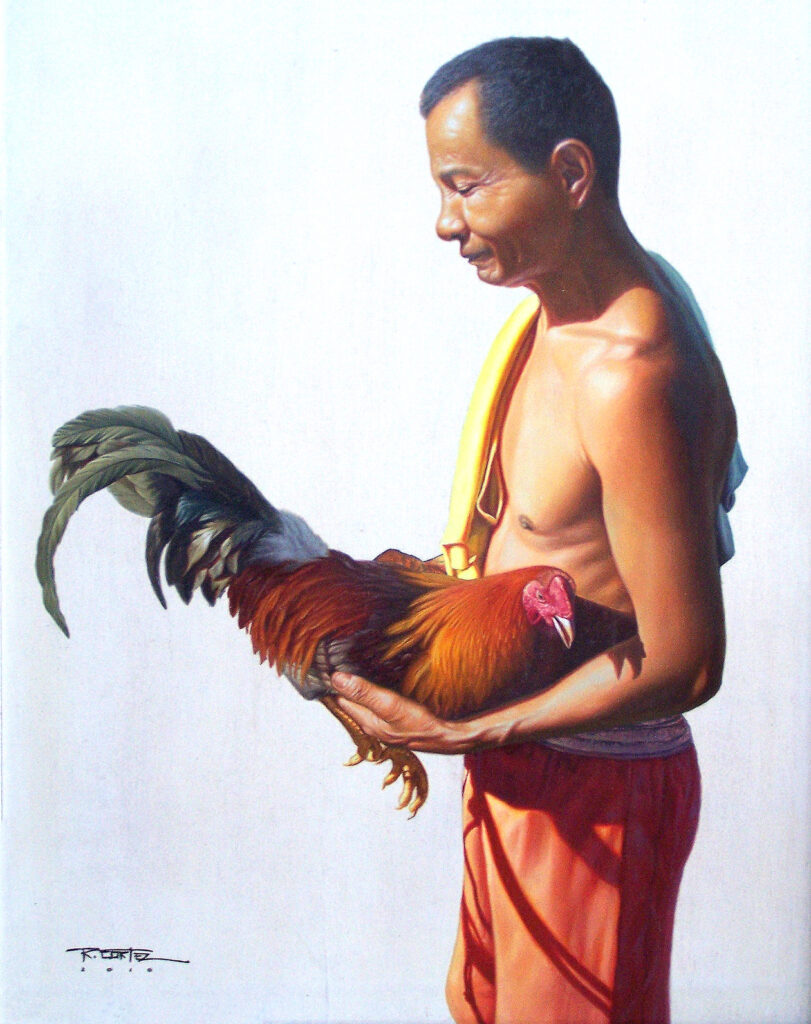

Developing Realism in His Paintings
With spiritual direction, “Let the bees, the trees, and the birds teach you to paint.” He painted nature. Every year, he set a goal to learn new materials and techniques. He learned how to paint with a pencil, pen and ink, watercolor, oil pastels, oil, and mixed media.
That experimental period continues to today, “Even today, I am learning as I paint, kasi pag sinabi mong hinog ka na, ang susunod doon, bulok ka na.” (Because when I say I am ripe, the next stage is decay).
So when fine arts majors say, “Why realism, that is obsolete now, why not switch to abstract?” He responds, “that if that is the case, folks are also obsolete now, and they would be abstractions.”

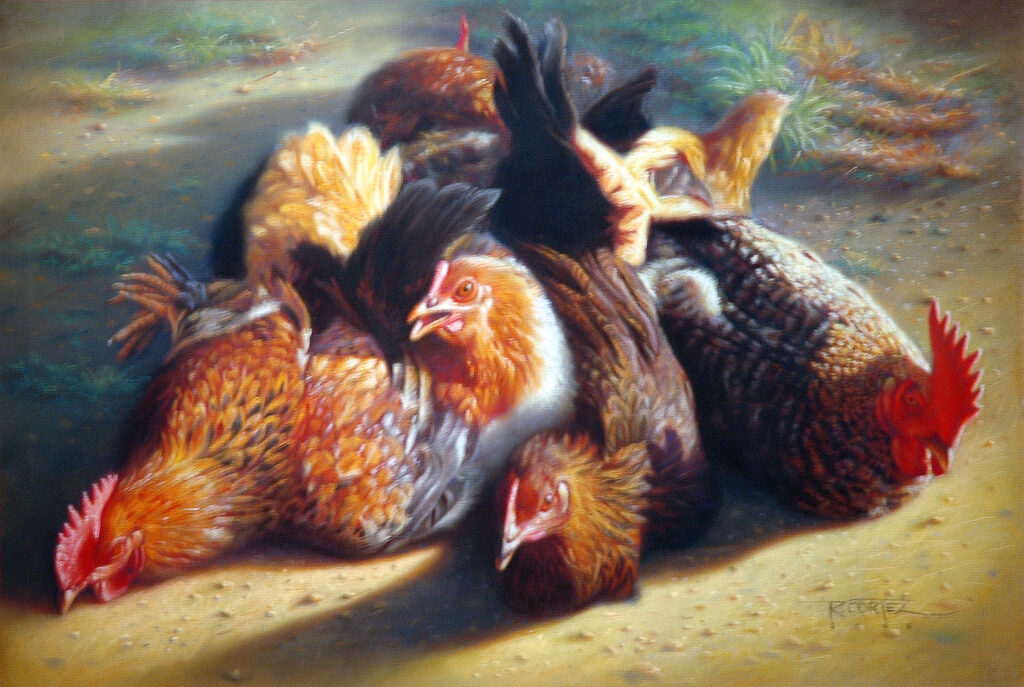
He paints by the series. Just like the rice painting, he had a 3-to-4 series. It allows him to change canvasses, to focus on another view. “I can’t afford to rest, lalong tatagal, kaya lilipat ako sa kabila.” (It prolongs the process, so I just move to another series).
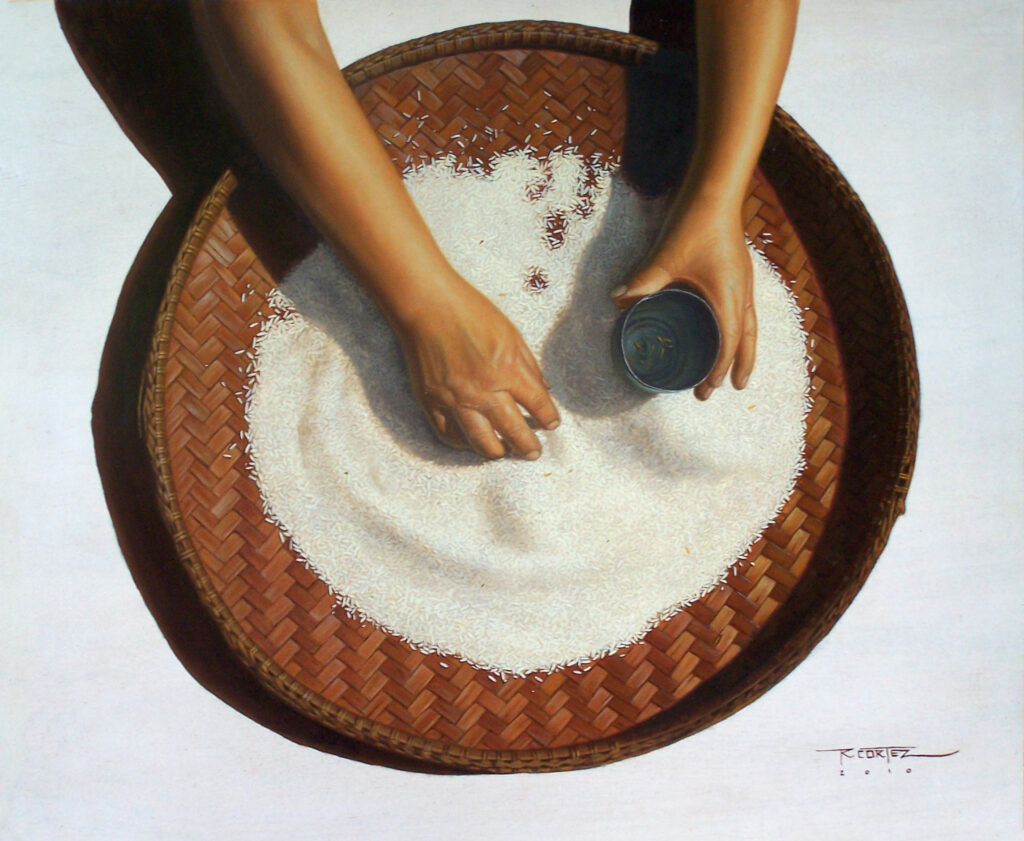
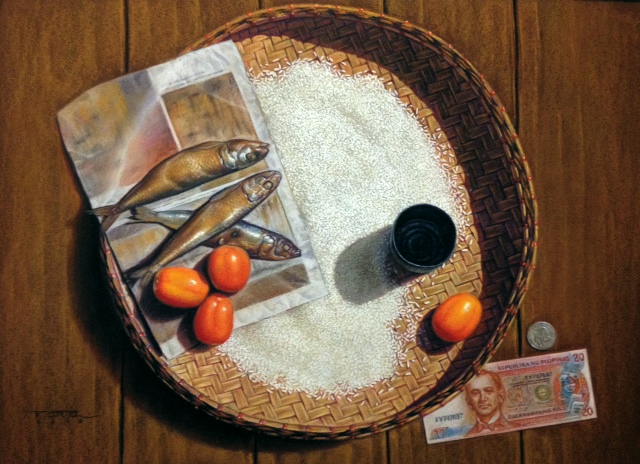

“I respect the time given by God, I respect that time. I also consider the viewer and balance the composition. Nature is truly beautiful – I want to give justice to nature, that is what I want to achieve.”
Master Painter Ronald Cortez has been painting for 18 years now. He is married to Maribel Cortez, and together, they have a 13yo son, Ronel, who lives in New York.
